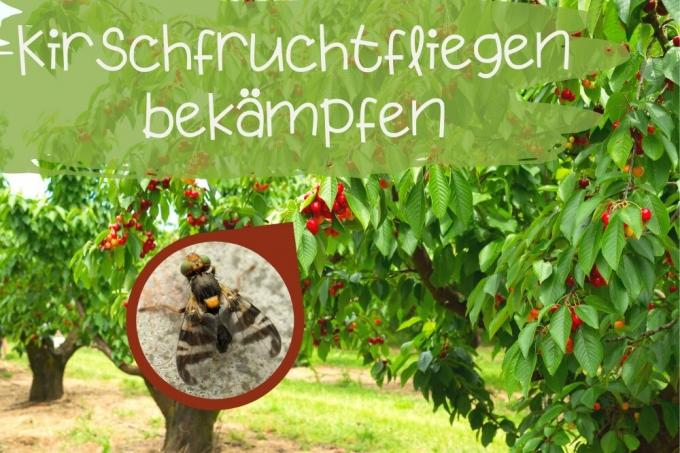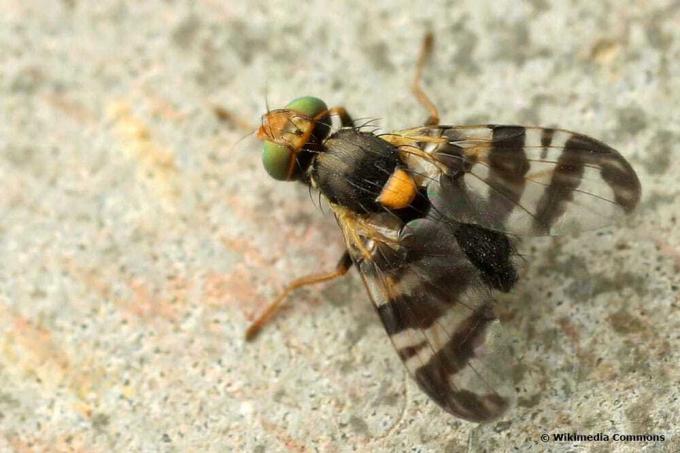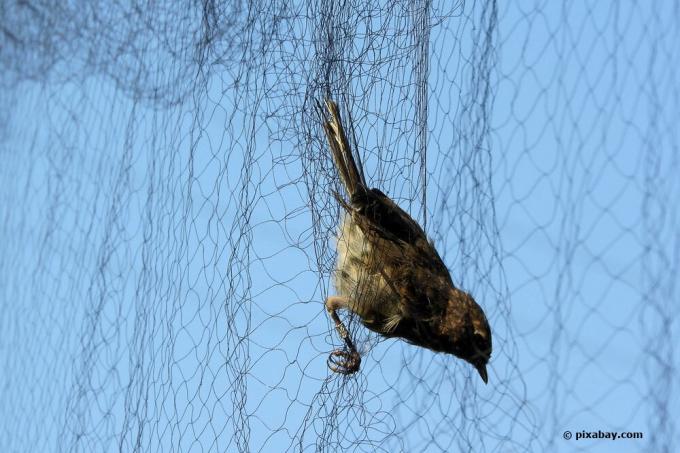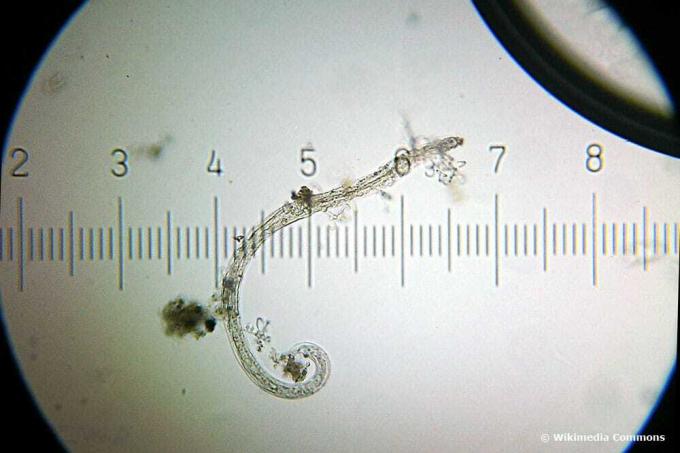
table of contents
- Recognize cherry fruit flies
- Fighting the cherry fruit fly
- Prevent
Cherries with maggots are not very appetizing. However, if you have your own cherry tree, you will hardly be able to avoid it. Some effective measures to reduce the infestation are presented here.
Recognize cherry fruit flies
Cherry fruit flies are insects a few millimeters in size that look similar to a normal fly. However, differences to the housefly are the banded wings, the green eyes and a yellow back shield. The cherry fruit flies lay their eggs in cherries that are just beginning to turn red. The maggots hatch and eat the flesh of the cherries. As a result, the fruits begin to rot and fall from the tree before they are fully ripe. The adult maggots hatch on the ground and pupate in the uppermost layers of the earth.

Infested fruits:
- have holes
- feel soft
- have rotten spots
- when pressure is applied, juice emerges at the point of attachment of the stem
Fighting the cherry fruit fly
In dry, warm years, the flies can reproduce en masse, while cold, damp weather does not suit them well. If the infestation is very severe, almost every cherry on the tree can contain a maggot. So control is very important if you want to harvest maggot-free cherries.
Note: It is not allowed to chemically control cherry fruit flies in private gardens or allotments.
Cover the ground
Covering the soil around the cherry tree does not prevent this year's infestation, but it does prevent infestation again next year. When from the end of May the soil around the tree is covered with a film or an impermeable fleece prevents the larvae of the cherry fruit fly from ending up in the ground and pupating there can. The fallen fruits or maggots are regularly disposed of in the garbage. They shouldn't be put on the compost heap, they would still pupate there.
Safety nets

If they are very tightly woven, culture protection nets not only prevent the egg-laying by cherry fruit flies. They also protect against bird damage, which can cause considerable damage. The disadvantage of protective nets is obvious with larger cherry trees. Old sweet cherry trees, which were generally grafted as high trunks, are much too big to be able to protect them with a net. So it is only suitable for small or young cherry trees. You must also make sure that no other animals, for example birds, get caught in a protective net. In order for a net to provide adequate protection, it must completely enclose the tree.
Beneficial insects
You can buy nematodes for biological control in specialist shops. These attack the larvae of the cherry fruit fly on the ground and kill them. The roundworms are tiny and are mixed with water and applied directly to the ground around the cherry tree using a watering can. Even this measure does not offer any protection this year, but prevents the next generation of flies from hatching in the following year.

Falling
Yellow panels are less suitable for controlling fruit flies than for determining an infestation and its extent. The yellow cardboard or plastic boards are coated with a glue that reliably holds the flies in place. An attractant is often added to the glue. Such a trap is also used to catch other pests. Sometimes, however, beneficial insects can also get stuck. The following are less at risk:
- Bumblebees
- Bees
- Hoverflies
- and all other insects that prefer flower nectar
You will not be attracted by the yellow of the boards or by the attractant. In order for yellow boards to have a sufficient effect, you have to distribute them in large numbers in the tree and replace them regularly. As soon as the cherries are fully ripe, the bars are removed again, which also protects beneficial insects.

Prevent
Most of the control measures already serve to prevent a new infestation in the next year. Other possibilities are:
Plant early cherry varieties
Since the cherry fruit flies attack ripening fruits, it is worth planting varieties that are already ripe during the breeding season of the fruit flies and are therefore red to dark red. They are then of no interest to the insects. The same goes for completely yellow varieties.
Note: But be careful with the cherry vinegar fly, it attacks fully ripe fruits!
Keeping chickens
Since the maggots pupate in the ground, chickens that scrape up the ground around the cherry tree and eat whatever insects they find are ideal. Because of this, chickens make a lot of sense in an orchard. However, keeping chickens is not possible in every garden.

Plant spacing
Cherry flight flies do not fly very far, which is why a suitable distance between the cherry trees makes sense, it prevents the flies from meeting to reproduce.
Promote beneficial organisms
If you mainly manage your garden organically, you can rely on the help of beneficial insects. These mainly include the smaller songbirds that eat the cherry fruit fly. Nest boxes, water points and winter feeding ensure that many beneficial insects can be found in the garden.
What is not helpful - glue rings
A Glue ring the cherry fruit fly does not stop around the trunk of a cherry tree. It is only suitable for pests that crawl up or down the tree. However, larvae of the cherry fruit fly are easy to drop and both sexes of the fly are able to fly.




